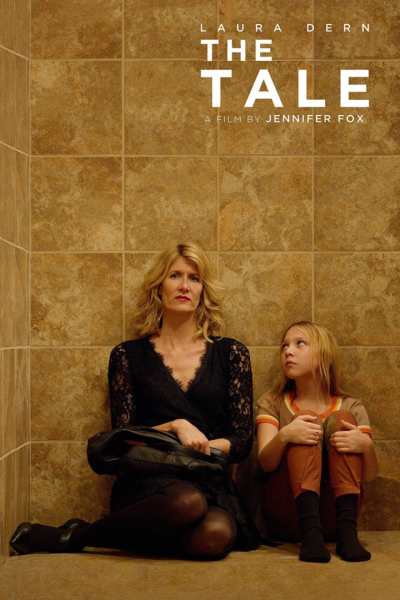HBO’s The Tale is a heartbreaking discussion of memory, and the role it plays in our ability to protect ourselves from trauma. The film originally debuted in the 2018 Sundance Film Festival. It has garnered high praise, including an Emmy nomination for the movie, and another for Laura Dern, who plays Jennifer “Jenny” Fox, the movie’s central character.
As an amateur documentarian, she unravels a part of her life she had previously viewed through another lens: one of consensual, loving sex. The voice of young Fox narrates the movie, and is stitched together with Fox interviewing the participants in her memories, both their past and present selves. As she investigates further, the recollection is dislodged from her, and it reveals the truth buried beneath the fictional anecdote she claimed it to be.
Fox’s mother calls, frantic upon finding the handwritten story, written by Fox for a class assignment. The story details the relationship between her daughter, the running coach Bill, and Mrs. G, her horseback riding coach, but Fox shrugs it off, dismissing the fear as an extension of her mother’s prudish and overbearing nature.
At the age of 40, she is launched back in time, prompted by that story she wrote as a 13-year-old girl, to investigate what really happened. The young Fox was entranced by the relationship formed between Mrs. G and Bill, amazed that two people could be so close, but “not with their bodies,” as she states in the beginning of her story. She crowned the two characters with the title “beautiful,” praising the relationship into which she was so delightfully invited.
A lonely child in a house with parents too busy with her siblings, she is welcomed into the affair of Mrs. G and Bill, where she is seen, heard, and accepted, with them feeling like the family, the parents, she had always dreamed of possessing. This is the beginning of Fox being groomed for Bill.
Bill eventually moves in to change the dynamic from familial to romantic, crooning compliments in Fox’s ear. The change is so gradual, and yet so unsettling, the viewer isn’t sure why they feel discomfort, but is aware that something is wrong.
Fox struggles to identify the assault as such, and instead justifies the abuse by stating that the two were in a relationship. Fox had been introduced to the man by her riding coach, Mrs. G; Bill taught that pleasure would come through the pain. And while the film uses an adult body double to film the scenes in which we see a 13-year-old Fox in bed with Bill, it doesn’t make it easier to watch or stomach.
Mrs. G is later described by Iris Rose as akin to “the cat, bringing the mouse.” Rose, a former employee at Mrs. G’s horse farm and another victim of Bill and Mrs. G, details to Fox her time, and trauma, with the couple. Through her interview with Rose, Fox comes to the realization that she was indeed raped and abused.
As the viewer, it is a reminder that child sexual abuse is often perpetrated by people children know and feel comfortable with. It doesn’t happen in a vacuum, but instead, through calculated steps. The Tale highlights the process, revealing the methods used to lure young Fox into a relationship that shaped, and ruined, her life.
Written and directed by Fox, this film is a moving tribute to so many victims who are impacted by the lies and abuse at the hands of others. It has been heralded as the bravest movie you’ll ever see, and I am inclined to agree.


